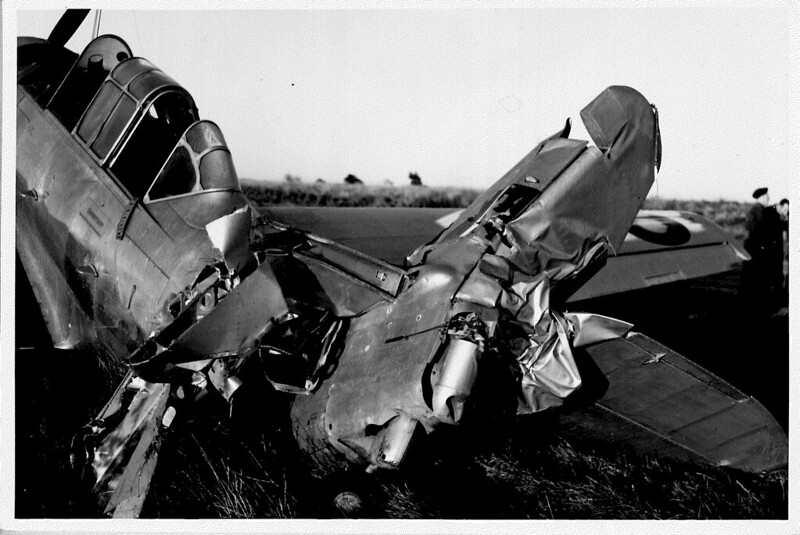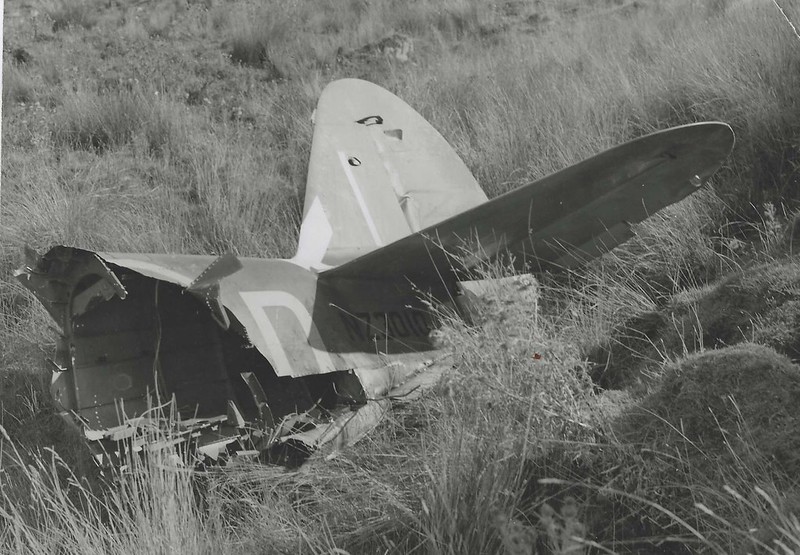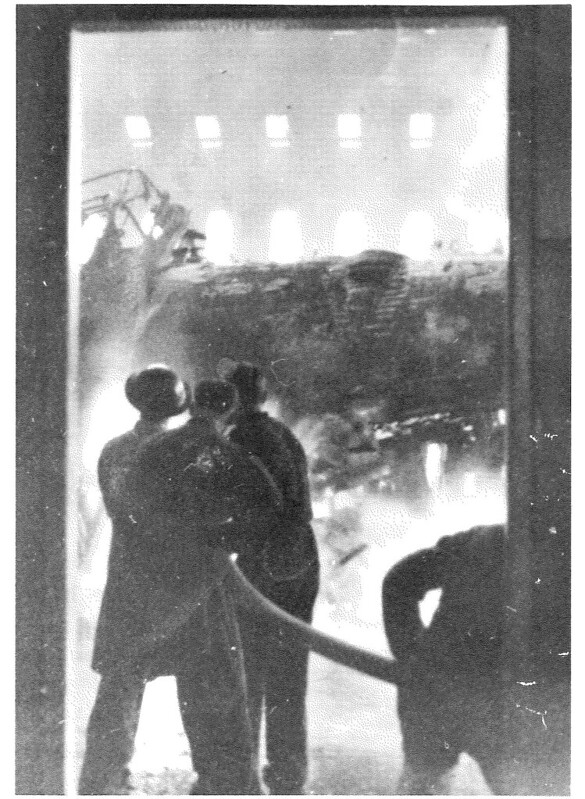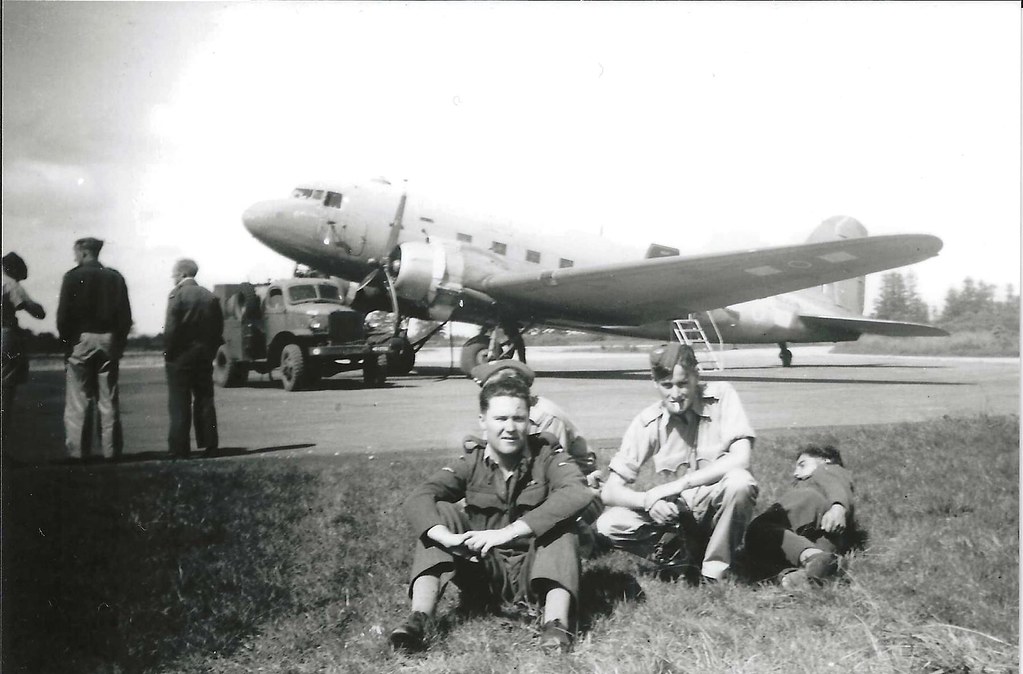|
|
Post by Antonio on Dec 8, 2021 17:34:41 GMT 12
I'm setting this thread up so I can share my photograph collection(s) with you all. I know I have already published some of these on existing threads but I have added them here for completeness. I hope you enjoy them. Sláinte First up are some wartime and early post-war RNZAF pictures: 
Harvard Mk.IIA NZ1043: 2(F) OTU Struck by NZ1014 while taxying at Ohakea 28 June 1945. Photo: RNZAF Ohakea (Unit 12) G2863 dated 28th June 1945  P-40E NZ3010 FE-D: 2(F) OTU Photo update: Clearer resolution showing the serial number P-40E NZ3010 FE-D: 2(F) OTU Photo update: Clearer resolution showing the serial numberMid air collision with NZ3024 during formation training from Ohakea on 03 April 1944. Flying Officer M. Hancox uninjured. Note the White bars Photo: RNZAF Ohakea (Unit 12) G1653 dated 5th April 1944 
P-40E NZ3098: 4(F) OTUCrashed after engine failure on take off from Ohakea on 08 August 1944. Photo: RNZAF Ohakea (Unit 12) G2065 dated 8th August 1944  P-40 of 2(F) OTU following an engine fire. Possibly P-40N NZ3244 Photo: RNZAF Ohakea G1812 dated 17th May 1945
 P-40N FE-L: 2(F) OTU Photo update: Clearer resolution Following a force-landing. Likely suspects include: NZ3182, 3232 or 3245 Photo: RNZAF Ohakea G2615 dated 21st March 1945 
TBF-1 NZ2504NZ2504 with the Research & Development Flight at Hood Airfield (Masterton) during aerial topdressing trials in 1949 Photo: Argosy Photographs, Palmerston North The following four pics are from the destruction of Mosquito NZ2337 Ohakea: Hangar 2 - 2nd June 1950. An inspection lamp fell into an oil drip tray, starting a fire and the aircraft was unable to be pushed out of the hangar in time to save it. 
DH Mosquito NZ2337 
DH Mosquito NZ2337 
DH Mosquito NZ2337 
DH Mosquito NZ2337 Sorry for the poor quality but they are copies of originals that were shown to me by an ex-WAAF who was there. |
|
|
|
Post by Dave Homewood on Dec 8, 2021 19:40:14 GMT 12
I was told by a Warrant Officer working in that hangar when the fire began that it was a power extension cable that got dragged across the oil pan, where the extension was plugged into a lamp, and it shorted and sparked at the three-pin plug - rather than the lamp falling into the pan.
Great photos, the P-40 accidents are very interesting.
|
|
|
|
Post by johnnyfalcon on Dec 9, 2021 13:11:03 GMT 12
Those Mosquitoes burn well, don't they?
|
|
|
|
Post by Deleted on Dec 10, 2021 16:09:55 GMT 12
Great photos, the P-40 accidents are very interesting. Agreed, the severed tail section image is quite sobering. Thank you for sharing, Antonio! |
|
|
|
Post by Antonio on Dec 21, 2021 18:27:41 GMT 12
|
|
|
|
Post by Antonio on Dec 21, 2021 19:10:58 GMT 12
Some Family-related ones: 
J C McDonald by Antonio McDonald, on Flickr My dad, born Coupar Angus, Scotland, 5th October 1898. Ran away to sea early and when war was declared, joined the Mercantile Marine Reserve and served on the Seaplane Tender HMS Campania from commissioning until her sinking, due to a gale in the Firth of Forth, 5th November 1918. For his service he received the MMR Medal, Great War Medal and Victory Medal. Then back to sea with the Merchant Navy before settling in NZ during the 1930's. 
HMS Campania by Antonio McDonald, on Flickr Note what appears to be a Sopwith Pup on the fly-off deck and behind the fore-funnels a pair of Fairey Campanias with folded wings. During 1941, he volunteered for service in the RNZAF and was posted to Rongotai. The following pictures are all that I have from those days: 
Rongotai lineup 01 by Antonio McDonald, on Flickr 
Rongotai lineup 02.jpg by Antonio McDonald, on Flickr 
Rongotai lineup 03.jpg by Antonio McDonald, on Flickr 
Rongotai lineup 04.jpg by Antonio McDonald, on Flickr I don't remember who the airmen in the photographs are. He never bothered to wear his WW.I medal ribbons. He talked a lot about "The Bull" Duncan, the Station disciplinarian / Warrant Officer I think. HE was a craftsman carpenter / joiner and made many clocks from old propeller hubs, jewellery from perspex and white-metal, 4 brass model aircraft; Harvard, Oxford, P-39 (yeah of all the aircraft) and an L.10 Electra. Hopefully the first three are still with the RNZAF museum 
Brass L.10 Electra by Antonio McDonald, on Flickr A story he told me was that he was selected for service in Singapore but came down with flu just before departure and despite his strong objections, was sent to the Fever Hospital on Mt. Victoria, he absconded, to the top of the hill to watch his ship depart. He didn't have a fever so was sent back to Rongotai - his ship sailed into the Coral Sea the Singapore fell so sailed back home and all those on board were entitled to war pensions! He wasn't happy. Hope you don't mind my insight to an ordinary bloke who did his bit. I'm proud of him. |
|
|
|
Post by Dave Homewood on Dec 21, 2021 19:31:00 GMT 12
Wow terrific shots again! That one of NZ3210 shows just how highly polished it was, it looks shinier than NZ3110 was!
And wow, those No. 42 Squadron photos are great, so rear photos there!
|
|
|
|
Post by Dave Homewood on Dec 21, 2021 19:42:42 GMT 12

Looks like maybe the Porterfield on the left - or is it something else? Then the Waco QDC NZ570, then Miles Whitney Strait NZ577, and de Havilland Puss Moth NZ582 
Puss Moth 
Waco QDC NZ570 |
|
|
|
Post by Antonio on Dec 22, 2021 10:36:12 GMT 12
|
|
|
|
Post by davidd on Dec 22, 2021 15:04:38 GMT 12
Antonio,
Enjoyed the great photos, but I am rather worried about veracity of the story of RNZAF personnel being sent to Singapore, whose ship was frustrated by events and returned to NZ. That voyage may well have happened (although I have not heard of it myself), but I do not really believe that the personnel on that particular voyage would have been entitled to any kind of war pension.
Many weird and wonderful stories were passed around in wartime, and quite a lot proved to be what was termed "Scuttlebutt" (often a grain of truth surrounded by an unbelievably large amount of exaggerated nonsense, and sometimes there was not even a grain to start with!) The Government itself got quite worried by all sorts of accusations from editors about all sorts of scandals which had been forwarded to them by serving soldiers, airmen, etc (names never revealed) about all sorts of waste, unfairness, horrendous inefficiencies, etc. Later in the war more of these sorts of stories seemed to be appearing (censorship was most tightly enforced in 1942/43), with many of the stories originating within the armed services themselves and then being leaked to the newspapers or even directly to the government, who then had to attempt to explain them without going into too much detail. Often the NZ Govt felt it was fighting a loosing battle on some stories, and a study of some of the Australian official war histories reveals very similar problems, some worse than ours, on their side of the Tasman.
|
|
|
|
Post by oj on Dec 22, 2021 18:58:40 GMT 12
Any new inductee to the No. 5 (ASF) Hangar at Ohakea was always shown the new portion of the hangar roof post-Mosquito fire. A free lesson to newbies about the dangers of fire in a hangar.
|
|
|
|
Post by nuuumannn on Dec 30, 2021 17:59:27 GMT 12
Note what appears to be a Sopwith Pup on the fly-off deck and behind the fore-funnels a pair of Fairey Campanias with folded wings. Good picture, I have the same one in my personal collection. Mine came from an album of photographs attributed to the Photographic Section, RNAS East Fortune. The ship was photographed in early 1918 in the Forth Estuary from a non rigid airship based at the naval air station. |
|
|
|
Post by Antonio on Dec 30, 2021 20:22:07 GMT 12
|
|
|
|
Post by nuuumannn on Jan 2, 2022 10:26:27 GMT 12
Yup, seen both those images before. I think you should dazzle camo the model. It'll look good. This image was taken from the same album at the same time, it shows a non-rigid , SSZ.59 landing on the aft deck of HMS Furious, the first time an airship landed on an aircraft carrier.  SSZ 59 SSZ 59 |
|
|
|
Post by Antonio on Jun 7, 2022 21:39:26 GMT 12
I brought these two photos on TradeMe. Listed as: "RNZAF DC3/ C47 aircraft at Fiji, circa 1947" (but there is no provenance) The prints came with the negatives which I will donate to AFMoNZ 

Serial unknown but there seem to be a name below the cockpit with, I believe, shadows from the aerials making a 'design' on the fuselage? |
|
|
|
Post by davidd on Jun 8, 2022 12:44:41 GMT 12
My first thought when I saw these two photographs was "Norfolk Island?" Probably the proximity of the glimpse of trees on RH side, which look vaguely like Norfolk pines. If in Fiji I am presuming it is Nausori (which certainly had various scattered trees around it then, of different types and heights), so guess I can go with Nausori. Not certain when Nandi became the main operating field for the 41 Squadron C-47s passing through, now trying to remember the usual transport route to Japan at this time. Nandi was the best field in Fiji, but a greater distance from Suva than Nausori which may have been the most important consideration. I don't think there were many larger-type trees close to the Nandi area, as they appear above.
|
|
|
|
Post by Deleted on Jun 10, 2022 21:11:36 GMT 12
The prints came with the negatives which I will donate to AFMoNZ Bravo Antonio! |
|
|
|
Post by Antonio on Jun 11, 2022 13:18:05 GMT 12
The underwing Pacific roundel & bar (ZPB) poses the question as to the date of 1947.
Were they still adorning C-47's then?
|
|
|
|
Post by davidd on Jun 11, 2022 13:35:50 GMT 12
Yes, the national identification markings tended to be left on aircraft in the immediate post-war years, but by 1948/49 most of these had been converted to the (still) wartime-type C and C1 roundels, finflashes, etc. Only new aircraft to arrive for RNZAF during this period (Meteor III, Auster J/5, various versions of Mosquitos, and Aerovans, plus Oxfords remanufactured by DHs as Consuls) were also generally painted up with C or C1 roundels, in various sizes. However some aircraft still remained in their wartime markings for considerable periods, including some active Harvards, three of which became famous as members of the first (un-named) aerobatic team at Wigram, each one in a completely different scheme. The definitive RAF Type D roundel was introduced about 1949/50, and quickly replaced all previous types, although aircraft in long-term storage generally remained as they were, and only received the later roundels if they were recalled to flying service.
|
|

